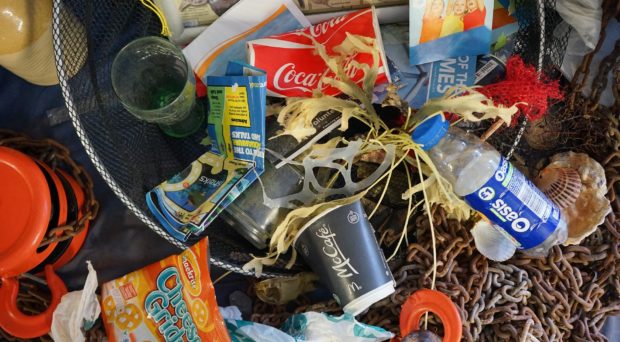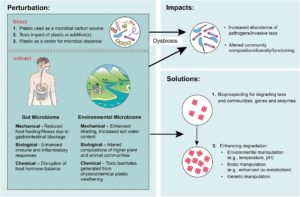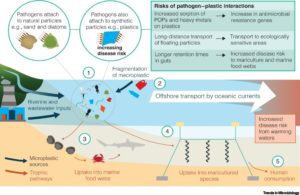
Plastic waste has now been found in every part of the environment, and it is estimated that between 15-51 trillion pieces of plastic can found in our oceans alone. Microplastics are plastics that are less than 5mm in length and, as they can take hundreds of years to degrade, will accumulate in organisms and the environment, causing harm for most life on Earth for many centuries to come.
Our news channels are full of articles about plastics and microplastics and their effect on human, animal and plant life through toxic poisoning, trapping marine life and such but, as yet, their effect on microorganisms has not seen the same level of journalistic attention. Nevertheless, the impact at the microbial level could have far reaching consequences for all life on Earth.

Gavin Lear and colleagues describe in their recent Review in Environmental Microbiome, the different ways that microplastics could impact microorganisms… and, through them, us. They discuss the direct and indirect impact of microplastics on gut and environmental microbiota leading to increased abundance of pathogens that displace the normal (helpful) microbiota, causing longstanding health and environmental consequences.
Probably most disconcerting at this current time when the world is fighting a pandemic, is the potential of microplastics to become disease vectors, dispersing pathogens from one area to another.
Almost twenty years ago, Mercedes Maso and colleagues showed that plastics act as vectors for harmful algal bloom species such as dinoflagellates from the Ostreopsis and Coolia genera (both can be toxic to humans and animals). Since then, pathogenic Vibrio spp have been detected in microplastics in the North and Baltic seas, Bay of Brest, Forth Estuary in Scotland and China coastline amongst others – and it is important to note Vibrio spp are not the only pathogens to have been detected in this way.
Jake Bowley and colleagues describe how pathogenic microorganisms, such as Vibrio spp, can attach to microplastics in the same way they would attach to natural particles such as sand or diatoms. It seems that microplastics easily resemble the size and structure of naturally occurring particles that bacteria would adhere to – and with trillions of pieces of plastic in the ocean, we have essentially just handed them many more ‘vehicles’ to use.

Once adhered to microplastics, pathogenic microorganisms can pose as threats in three ways: through long distance transport to fragile areas e.g. by ocean currents – with warming waters increasing disease risk; longer retention times in animals and plants (both wild and farmed) thus impacting food webs; and by increasing the chances of antimicrobial resistance genes occurring.
There is a growing number of studies looking at the relationship between microplastics and microorganisms – some of them even describing microplastic degradation by microbial species and thus even helping to reduce the threat of microplastics. Even so, with so much microplastic pollution in our environment, the dangers they pose will not go away soon. Therefore, a crisis that we now mainly consider as environmental, could turn out to be linked to human, plant and animal health.
I sincerely hope that this will not be the case, especially considering the problems the world is going through at this current time, but it may be that in the future we find that we have shot ourselves in the proverbial foot many times over by being the creators of a new disease vector that facilitate dispersal of outbreak – or even pandemic – causing pathogens. Moreover, a vector that could rival mosquitoes in terms of ‘population’ size and will outlast many current vectors.

Comments